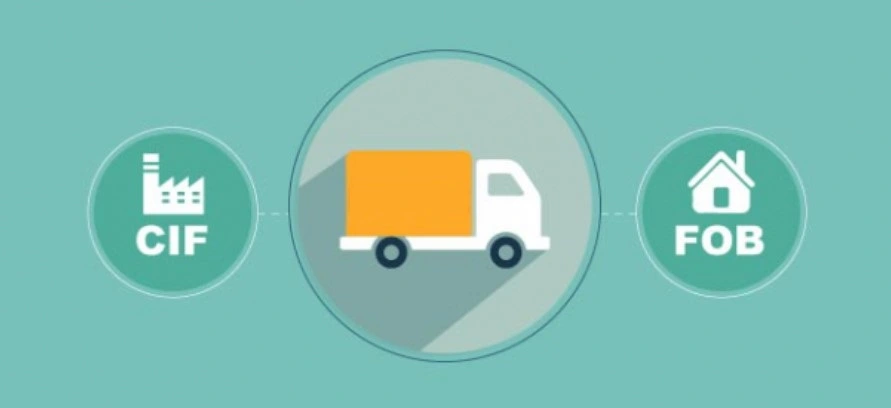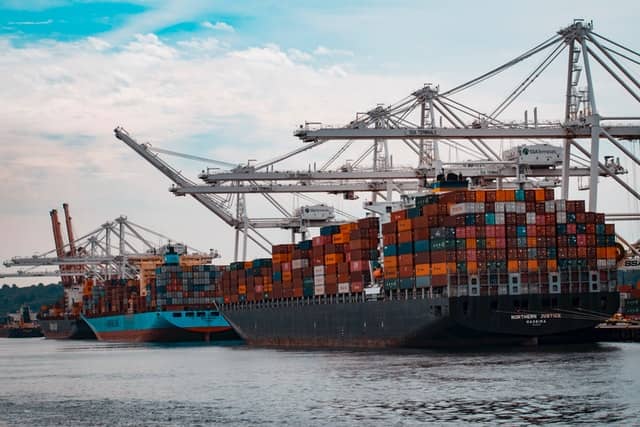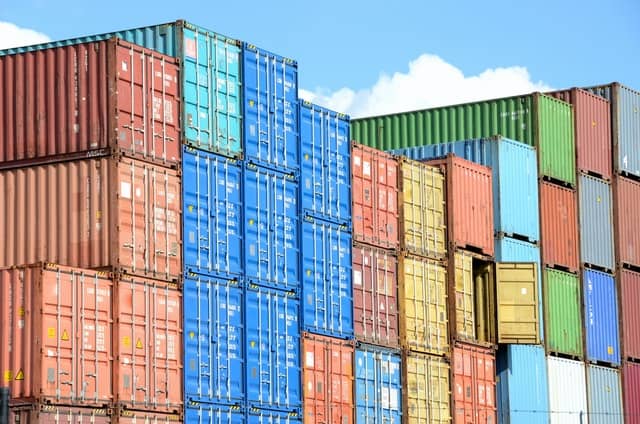Lorem ipsum dolor sit amet, consectetur adipiscing elit. Ut elit tellus, luctus nec ullamcorper mattis, pulvinar CIF Incoterms is a term you might have never heard unless you’ve dealt with international sea freight of bulk orders. So, this guide will be a great place to learn the CIF meaning in shipping, even if you’re completely new to sourcing in bulk.
There are altogether 11 of these Incoterms according to the latest Incoterms 2020, and CIF is one of them. They update every 10 years.
In simple words, we could say that CIF underlines the seller’s obligations and expenses.
So, let’s jump right in!
Chapter 1: Overview About the CIF Shipping Incoterms
“C” stands for cost, indicating that the freight forwarder is responsible for the cost of loading and unloading cargo onto or off of trucks.

“I” stands for the invoice, meaning that the freight forwarder has control over what is on the invoice, but does not load or unload cargo onto or off of trucks.
“F” stands for free, meaning that the freight forwarder does not need to load or unload cargo onto or off of trucks, but is responsible for the cost of any storage involved in the transport.
“B” stands for the bill of lading, which means that the freight forwarder has charge of the logistics, but not the invoice.
1. What is a CIF (cost, insurance, freight)
When a company sets up its shipping process, the company will need to teach the 3 major parties in their business: sales, operations and customer, and how to calculate CIF.
The customer will be told that CIF has two parts: cost and freight. In reality, it is much more complex.
The cost is the total price of the shipment, which includes all costs related to the preparation and packing A CIF (cost, insurance, freight) is a three-part shipping cost that includes the costs of transportation, insurance, and handling.
It is often bundled with other forms of transport like air and sea transportation. The freight is the price of your shipment.

The CIF is the most complicated part of a shipping calculation. It is the third main part of the shipping cost.
The CIF is the total cost of your shipment, which includes all costs related to the preparation and packing.
It is often bundled with other forms of transport like air and sea transportation. The freight is the price of your shipment.
2. Why Use a CIF?
A CIF is a cash invoice that the buyer of a product or services pays to the seller when they make a purchase.
Unlike other types of invoices, it typically has a discounted price on it and can be used as payment for various expenses.
Businesses use CIFs to pay for the cost of products or services that they have purchased so that they can receive a discount.
The seller receives the discounted amount and you receive a cash payment.
3. How to get a CIF from your supplier
The CIF stands for Cost, Insurance, Freight. It is a common term that is used to describe the total price of your goods once they arrive at the warehouse or head office.
The CIF does not include any shipping costs and it only includes the cost of goods sold.
When you are buying from a warehouse, the CIF will be calculated automatically.
If you purchase from a wholesaler, then you will have to calculate the CIF yourself and then give your payment instructions to the wholesaler.
To calculate the CIF, you need to know how much of each type of item you are going to sell, how much of each type you have on stock, and the total weight of each item.
Slight discrepancies in the weights of items will affect the CIF calculation.
If you have items on the stock with slightly different weights, then it is important that you take care in matching the weights of the items in your inventory to the weights of the same items sold by others.
If you do not match the weight of your items, the CIF will be wrong.
Chapter 2: CIF Costs and Risk Transfers
It’s important to understand that the allocation of risks and costs to the buyer and seller in Incoterms is not always the same. It can be, but not in the case of CIF.
Under CIF Incoterms, the risks and costs transfer from the seller to the buyer at different points in the process.
So, the seller delivers the goods and pays for transport and insurance coverage, which means the cost transfers to the buyer at the moment of arrival at the port of destination.
However, the risk transfers to the buyer from the moment of onboarding or loading the bulk cargo on the vessel.
Seller Is Responsible For
Under CIF terms, the seller is responsible for the bulk cargo until it lands at the port of destination. The seller is responsible to provide three main documents:
1.The invoice (cost)
2.The insurance policy (insurance)
3.The bill of landing (freight)
Once the bulk cargo reaches the port of destination, the cost transfers to the buyer.
Here are all the seller responsibilities:
- Buying the export license
- Product inspections
- Fees for loading and shipping to the port of destination
- Packaging costs needed export of the bulk cargo
- Duty and taxes (custom’s clearance and exporting fees)
- Expenses for insurance of the bulk order until the buyer’s port
- Providing the invoice, insurance policy, and bill of landing
Buyer Is Responsible For
As we’ve stated above, the buyer starts becoming responsible for costs once the order arrives at their destination port. But, the risk of loss or damage is transferred from the seller to the buyer earlier – once the products board the vessel.
Furthermore, under CIF, the buyer is responsible for:
- The unloading process and expenses at the terminal
- The transfer from the terminal to the storage facility
- Import custom duty and taxes
- Receiving the invoice, insurance policy, and bill of landing
Using Cost, Insurance, and Freight (CIF) Incoterms
CIF Incoterms determine when the seller’s responsibilities and liabilities end, and the buyer’s responsibilities start. This is when the risk or cost associated with loss or damage transfers to the buyer.
CIF is used only for waterway and international sea freight. It’s most suitable for sellers who have direct access to board the vessel for loading, such as non-containerized bulk cargo.
CIF Incoterms are unsuitable for bulk cargo in containers. For containerized cargo, you can use CIP (Carriage and Insurance Paid) or CPT (Carriage Paid To) Incoterms.

Often, items like oil or oversized goods use CIF Incoterms for shipping.
And, finally, CIF, CIP, and other C- Incoterms are all good for transactions that use letters of credit.
CIF Advantages
Let’s take a look at the benefits of CIF for buyers and sellers separately.
For Sellers
- Possibility to purchase cheaper (minimum) insurance
- Knows local laws and can find economical solutions
For Buyers
- No need to deal with the insurance policy by yourself
- Sellers cover costs up to the arrival
CIF Disadvantages
There are also several cons of CIF Incoterms to consider:
For Sellers:
- You cover all expenses up to arrival at the destination port
- You take care of the entire export procedure
For Buyers:
- Risk of insurers that won’t accept claims
- Some countries don’t allow CIF imports
FAQs about CIF Incoterms
We want to make sure we’ve got all bases covered in this guide. So, here are the most frequently asked questions on CIF Incoterms:


Conclusion
Learning about CIF Incoterms is important if you’re dealing with international suppliers and sourcing in bulk, especially if you’re interested in sea freight and a hands-off approach.
Now that you’ve learned all about CIF Incoterms in shipping, you’re ready to start sourcing in bulk. If you aren’t sure where to start, we’re here to help for free. Get your free sourcing quote today, and let’s find the perfect products for your business.
